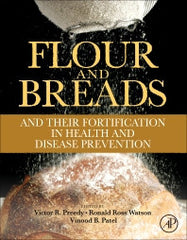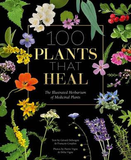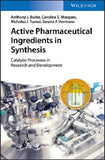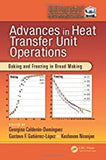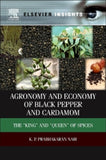Flour and Breads and their Fortification in Health and Disease Prevention by Preedy & Watson & Patel
SPECIAL INDIAN REPRINT !
Flour and Breads and their Fortification in Health and Disease Prevention
10 Jan 2011
Academic Press
544
276 X 216
Identify the potential health benefits of a variety of flours and the impact of fortification on their ability to address specific conditions
Key Features
Examines those flour and bread related agents that affect metabolism and other health-related conditions.
Explores the impact of compositional differences between flours, including differences based on country of origin and processing technique.
Includes methods for analysis of flours and bread-related compounds in other foods.
Description
Bread and flour-based foods are an important part of the diet for millions of people worldwide. Their complex nature provides energy, protein, minerals and many other macro- and micronutrients. However, consideration must be taken of three major aspects related to flour and bread. The first is that not all cultures consume bread made from wheat flour. There are literally dozens of flour types, each with their distinctive heritage, cultural roles and nutritive contents. Second, not all flours are used to make leavened bread in the traditional (i.e., Western) loaf form. There are many different ways that flours are used in the production of staple foods. Third, flour and breads provide a suitable means for fortification: either to add components that are removed in the milling and purification process or to add components that will increase palatability or promote health and reduce disease per se.
Flour and Breads and their Fortification in Health and Disease Prevention provides a single-volume reference to the healthful benefits of a variety of flours and flour products, and guides the reader in identifying options and opportunities for improving health through flour and fortified flour products.
Readership
Nutritionists and Food Scientists interested in the specific health benefits of various flour resources
TABLE OF CONTENTS :
Preface;
Section I: Introductory Chapters, Flours and Breads;
The science of doughs and bread quality;
Monitoring flour performance in bread making;
South Indian parotta - an unleavened, flat bread;
Sourdough breads;
Focaccia Italian flat fatty bread: quality and technology;
Flour and bread from black, purple and blue-colored wheats;
Emmer (Triticum turgidum spp. dicoccum) flour and breads;
Einkorn (Triticum monococcum) flour and bread;
Maize: Composition, bioactive constituents and unleavened bread;
Amaranth: Potential source for flour enrichment;
Quinoa: Protein and non protein tryptophan in comparison with other cereal and legume flours and bread;
Sorghum Flour and Flour Products: Production, Nutritional Quality and Fortification;
Buckwheat flour and bread;
Non-starch polysaccharides in maize and oat:
ferulated arabinoxylans and b-glucans;
Gluten Free Bread: Sensory, physicochemical and nutritional aspects;
Dietary fibre from brewer’s spent grain as a functional ingredient in bread making technology;
Composite flours and breads: potentials of local crops in developing countries;
Legume composite flours and baked goods: Nutritional, functional, sensory and phytochemical quality;
Potentials of using okra seed (Abelmoschus esculentus Moench) flour for food fortification and effects of processing;
Apricot kernel flour and its use in health;
Macadamia Flours: Nutritious Ingredients for Baked Goods;
Banana and mango flours;
Use of Potato flour in bread and flat bread;
Section 2: Fortification of Flours and Breads and their Metabolic Effects;
Mineral fortification of whole wheat flour-an overview;
Iron particle size in iron-fortified bread;
Iodine fortification of bread: experiences from Australia and New Zealand;
Phytochemical fortification of flour and bread;
Carotenoids in sweetpotato, cassava and maize and their use in bread and flour fortification;
Production and nutraceutical properties of breads fortified with DHA and omega-3 containing oils;
Fortification with free amino acids affects acrylamide content in yeast-leavened bread;
Barley ß-glucans and fiber-rich fractions as functional ingredient in flat and pan breads;
Antioxidant activity and phenolics in breads with added barley flour;
Bread supplemented with chempedak (Artocarpus integer) seed flour;
Effect of starch addition to fluid dough during breadmaking process;
Fermentation as a tool to improve healthy properties of bread;
Apple pomace (by-product of apple juice industry) as a flour fortification strategy;
Use of sweetpotato in bread and flour fortification;
Fortification of bread with soy protein to normalize serum cholesterol and triacylglycerol levels;
Dietary breads and impact on postprandial parameters;
Fortification of vitamin B-12 to flour and the metabolic response;
Metabolic effects of ß-Glucans addition to corn maize flour;
Lupin kernel fiber: Metabolic effects in human intervention studies and use as supplement in wheat bread;
Metabolic effects of propionic acid-enriched breads;
Folic acid and colon cancer.
Impact of wheat flour fortification with folic acid;
Effects of the soybean flour diet on insulin secretion and action;
Metabolic effects of bread fortified with wheat sprouts and bioavailability of ferulic acid from wheat bran

